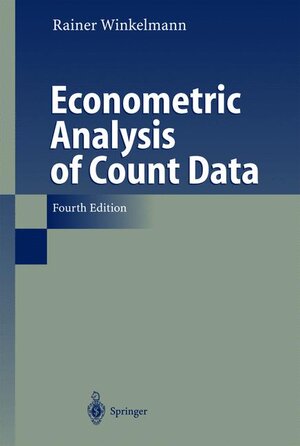- Econometric Analysis of Count Data (978-3-540-77648-2) - Einband - fest (Hardcover)

From the reviews:
JOURNAL OF THE AMERICAN STATISTICAL ASSOCIATION
„Winkleman has published numerous articles on using content models in economics and other social science journals. Because these are both applied and theoretical, he is well suited to write a monograph in this area. This book provides a very useful survey for anyone doing serious research using count data…for those who are doing substantive research using count data, [this book] will prove quite useful.“
From the reviews of the fourth edition:
„The main objective of the book is to introduce count models at a graduate level so that these models can be used by students, researchers or interested practitioners. … For all researchers who are concerned with count data the book offers a very good introduction into this field of research and many examples and interpretations of the results. Therefore, the book provides an excellent starting point for working in this area of applied research.“ (Herbert S. Buscher, Zentralblatt MATH, Vol. 1032 (7), 2004)
Econometric Analysis of Count Data
von Rainer WinkelmannGraduate students and researchers are provided with an up-to-date survey of statistical and econometric techniques for the analysis of count data, with a focus on conditional distribution models. Proper count data probability models allow for rich inferences, both with respect to the stochastic count process that generated the data, and with respect to predicting the distribution of outcomes. The book starts with a presentation of the benchmark Poisson regression model. Alternative models address unobserved heterogeneity, state dependence, selectivity, endogeneity, underreporting, and clustered sampling. Testing and estimation is discussed from frequentist and Bayesian perspectives. Finally, applications are reviewed in fields such as economics, marketing, sociology, demography, and health sciences. The fourth edition contains several new sections, for example on nonnested hurdle models, quantile regression and on software. Many other sections have been entirely rewritten and extended.





